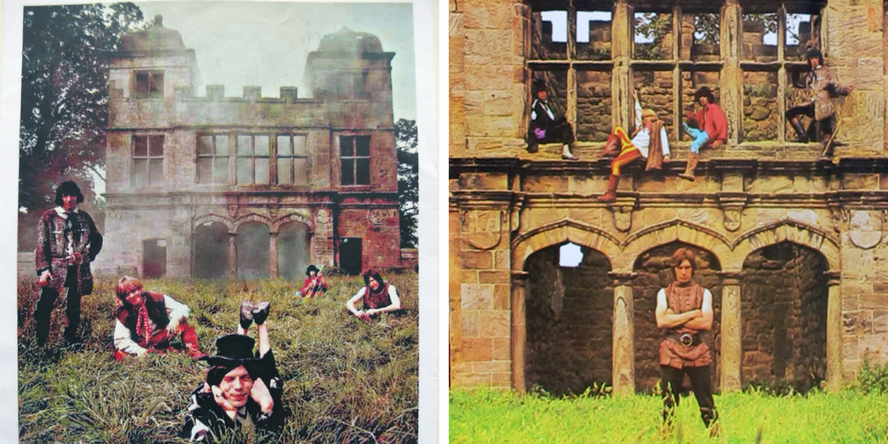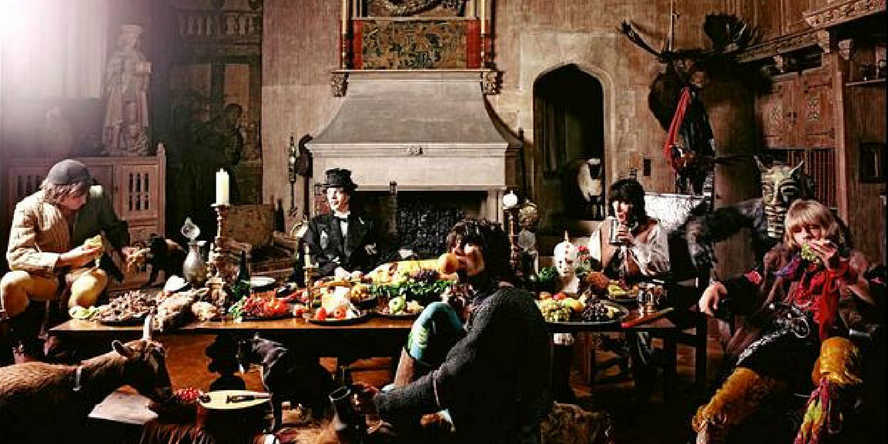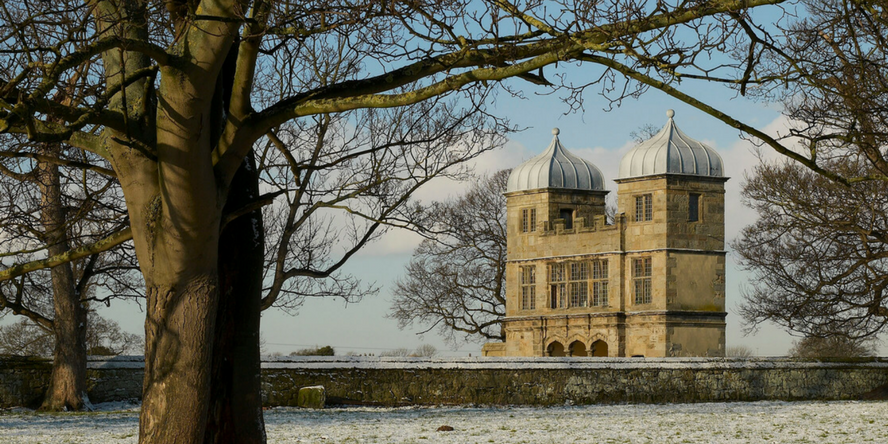 The Stones outside Swarkestone Pavilion. Photographs credited to Michael Joseph.
The Stones outside Swarkestone Pavilion. Photographs credited to Michael Joseph.
In the summer of 1968, Swarkestone locals were bemused and excited to discover the Rolling Stones in the local pub. The band had been driven up from London in limos to shoot the cover of their seventh album, Beggars Banquet with photographer Michael Joseph.
For all their raunchy R & B music, the vibe here was to be the Stones as louche medieval troubadours. Interior photos of the eponymous, but far from beggarly, ‘banquet’ had already been shot in a sumptuously panelled room at Sarum Chase in Hampstead, London, an Arts & Crafts house described by Pevsner as ‘pure Hollywood Tudor.’

The Stones at Sarum Chase. Photograph credited to Michael Joseph.
Sarum Chase’s 1930s exterior was clearly less convincing as a suitable backdrop, and so the still ruinous Swarkestone Pavilion was chosen instead – coincidentally Mick Jagger’s grandparents also hailed from Derbyshire. The result was an iconic set of images that captured the Stones ‘at their most beautifully dangerous.’
They drape themselves precariously on the lintels and skeletal mullions of first floor windows (hard to imagine this happening in today’s Health & Safety conscious climate). Captured in celluloid, they pose in the long grass, long legged in parti-coloured hose, baggy boots and blouson shirts, tapping our collective archetype of the wandering minstrel, romantic at heart but decadent and dangerous to know. They trail smoke flares for atmosphere and play cricket in the long grass - archetypally English, but a typically eccentric and anachronistic juxtaposition, just like the Stones themselves.
They’re great shots, but initially at least it seems these subversive roisterers wanted something harder edged for their album cover. With prescience perhaps of the stirrings of punk just a few years later, the band preferred a shot of a graffiti-covered toilet cubicle for the cover. This was too much for their record label Decca, and the dispute delayed the release of the album for several months.

The pavilion today.
When it finally came out, the Beggars Banquet cover was simply an ultra-conservative white invitation in copperplate font. An interior of a banquet shot at Sarum Chase used for the inside gatefold. ‘In the Grass’ at Swarkestone was used as the promotional poster for the album and instantly became the image associated with the album. Swarkestone Pavilion had to wait another ten years to make it onto an album cover, when it appeared on back cover of the compilation album, Hot Rocks 1964-1971.
The Stones might never have had their romantic ruin had Landmark’s first approach to the Harpur-Crewe estate to acquire Swarkestone Pavilion in 1966 been successful. As it was, it was not until 1985 that Landmark finally took it on and transformed it, no less romantic in restoration than in ruin, and still a must-see location for any Rolling Stones fan.
Swarkestone Pavilion is available from £40.50 per person per night. Click here to book your stay.